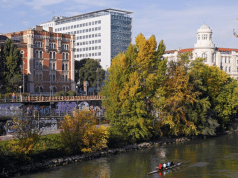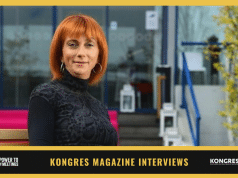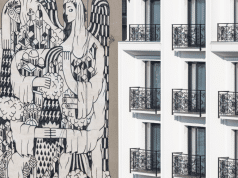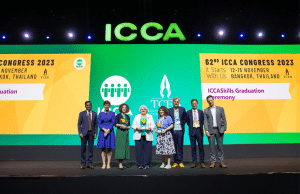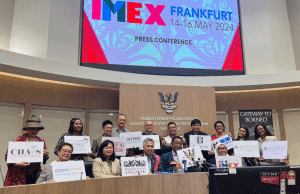Q: In the last four years, since you have been appointed to the CD’s Director General, how have you been combining your previous experience with such an extended service of the CD which is not just one of the main Slovenian cultural institutions, but also the biggest Slovenian congress centre at the same time?
In attending to my professional tasks of the Director General of Cankarjev dom I greatly rely on all my prior work experience – from working in journalism and the arts to managerial posts –, a career that spans over thirty years, and traces its beginnings to my student days. I gained my first experience working as a journalist and editor for Radio Študent while pursuing my studies of Comparative Literature and German. However, I believe that two things have proven instrumental in tackling new challenges successfully: my postgraduate degree at the Johannes Kepler University in Linz, an education that focused on subjects highly relevant in my pursuit, and the fact that I had previously worked at Cankarjev dom for an eight-year period, as Director of Theatre and Dance.
Compared to other Slovenian cultural institutions Cankarjev dom is an exception. It covers all areas of art, and dedicates 20-25% of its programme to congress management and commercial events. Another thing that distinguished CD from comparable cultural institutions is the fact that the income it generates is the highest in terms of percentage and total sum, amounting to circa 45% of the 9.5 million budget.
This ratio is not easy to achieve; however, this goal provides our organisation – although having a history of over forty years – with youthful vigour and ‘fitness’; it keeps it immune to the idleness of the heavily subsidised institutions. Still, we are also quite vulnerable: if the balance of social situation were disrupted, on a local or global scale, this could quickly jeopardise the high ratio of our self-generated income. That is why prior knowledge of the functioning and specifics of Cankarjev dom provides me with considerable advantage.
Q: How would you describe the relation between arts/culture and meetings industry? How do these two work together?
Diverse meetings, ranging from business to scientific, are doubtlessly all the more inspirational in a venue that hosts a rich programme of artistic events. Ultimately, what also counts is the architecture of the buildings that serve as the venue for meetings. It’s quite another matter if the gathering takes place in an exhibition centre and a hotel, or at Cankarjev dom – an arts and convention centre with a distinguished artistic tradition.
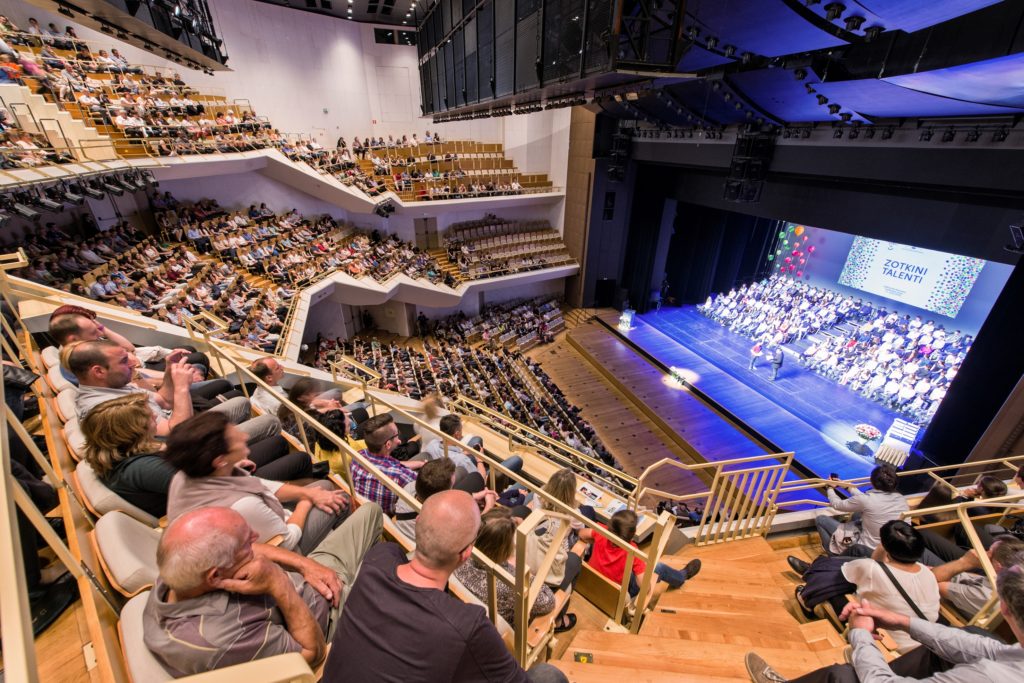
The New York City’s Museum of Modern Art (MOMA) is currently hosting the exhibition Towards a Concrete Utopia: Architecture in Yugoslavia, 1948-1980. Dedicated to foremost Yugoslav architects, the show also features Edvard Ravnikar, the architect who designed Cankarjev dom. The atmosphere that pervades Cankarjev dom is one of modern yet first-rate architecture – architecture that furthermore benefits from its diversified interior design, different in each auditorium, and invariably original light installations, all of which creates an impression of something new, fresh, unexpected. This is undoubtedly one of our strongest assets; visitors of cultural events and partners working with our Congress and Event Management department greatly appreciate the outstanding architecture of our venue as well as the countless options of its use. In late August, the Congress and Event Management department will organise an important international conference DOCOMOMO – an organisation dedicated to preserving the Modern Movement architecture of the 20th century, which will include leading international experts addressing the architectural legacies of Plečnik, Fabiani and Ravnikar.
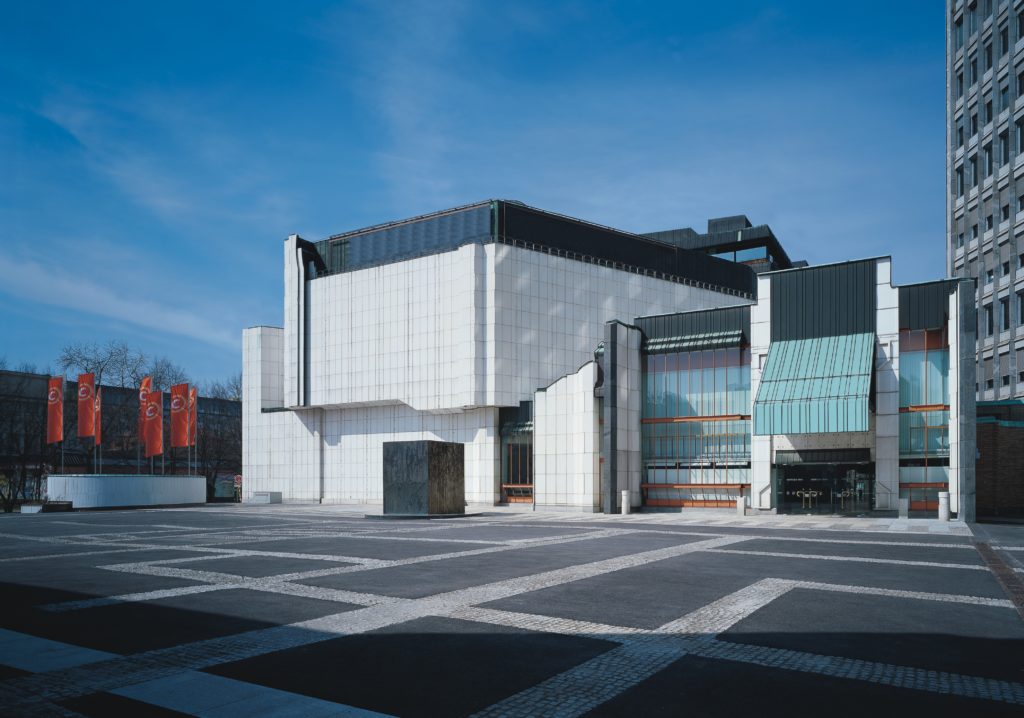
Q: Does CD offer to the meeting planners a particular execution of event that combines an art performance as well?
Our teams have great expertise in planning events that include artistic experiences. In keeping with the wishes of our clients, our staff design the set, lighting and sound design of an event. Although social gatherings, these events can be given artistic flavour. What’s more, equipped with invaluable experience they have acquired throughout the decades by implementing CD’s culture & arts programme, our teams use these skills to enthral and astound also clients of the Congress and Event Management department. Especially those open to new and different experiences.
Q: When CD hosts an event with 2000 participants, is the cultural programme frozen? Or does the cultural programme still work in parallel with the huge meeting?
There are two options; concurrent implementation of both programmes, the congress and commercial as well as artistic one, or, alternatively, all of CD premises can be booked by a meeting organiser.
Q: CD has been hosting 2200 events per year, approximately half of these are congress events. In a May 2017 interview for Slovenian newspaper Dnevnik you said that the CD wants to keep this proportion. But the meetings industry’s trend in Slovenia and its capital has been growing. How far is CD planning to extend its offer?
The ratio between art and congresses will stay within its current framework. For the time being, this is the best recipe for the success of the central Slovenian cultural and congress centre that’s annually visited by half a million people.
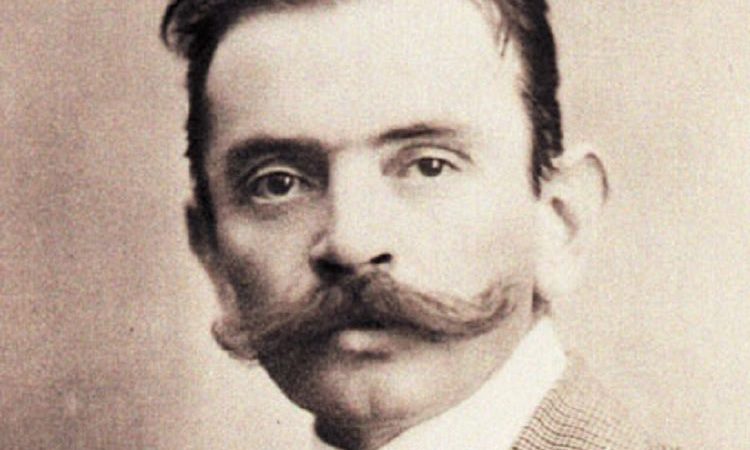
Q: This year the CD Cultural and Congress Centres is marking the centenary of the death of the greatest Slovenian writer Ivan Cankar with a special all-year-round cultural programme dedicated to his work, and this way also celebrating the giant whose name Cankarjev dom is proudly wearing. Since a lot of events that you host are international, do you plan to introduce to foreign attendees also this aspect of your programme?
Definitely. Between June 2018 and February 2019 an exhibition titled Ivan Cankar and Europe. From Shakespeare to Kafka will be on show. The exhibition will be presented bilingually, also featuring English texts. The concept has been devised by academician Prof. Dr. Janko Kos, alongside Prof. Dr. France Bernik the greatest connoisseur of Cankar and his work. The exhibition will seek to show Cankar as an important Central European author whose works echo the most relevant tendencies of his time. His works will be compared to those by the leading European writers, playwrights and poets, and Cankar’s literary and philosophical influences examined. On the day marking Cankar’s death, 11 December, we will organise an international symposium in cooperation with the Faculty of Arts. I am confident that the Slovenian as well as international public will gain insight into meaningful interpretations that will serve to re-evaluate Cankar’s work and his international relevance. It will be also foreign attendees who will doubtlessly enjoy this intellectual gem – an exhibition that is complemented by another show dedicated to Cankar at the Ljubljana City Museum.
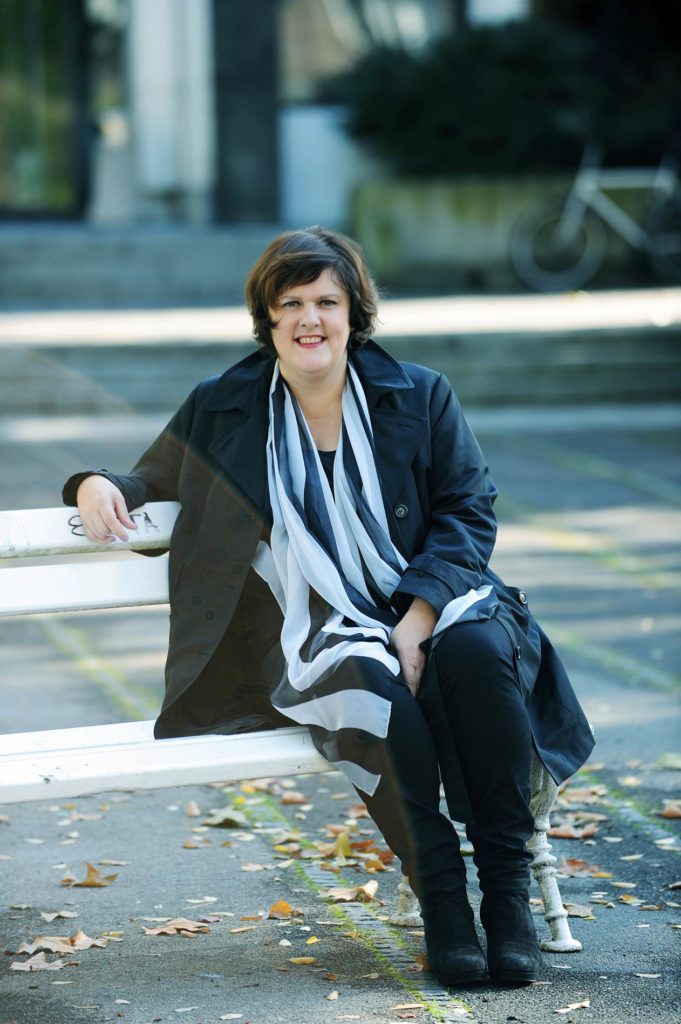
Q: Is there a particular event (congress, exhibition, conference, etc.) that you would like for CD to host? Something that would be close to your heart?
The Congress of the International Society for Performing Arts ISPA would be highly desirable. It would undoubtedly defy the cultural stereotypes and prejudice of economically more prosperous countries against Slovenia.
Q: You started working as a journalist for one of the oldest independent alternative radio stations in Europe (Radio Študent, founded in 1969) and now you are in one of the most important positions in Slovenia when it comes to culture and congress institutions. Radio Študent is known to be critical in its programme. How do you use the critical and independent thought that you have come across there in your current position? Are there any correlations?
Recently, a friend of mine said that it still shows that I was shaped by the punk subculture. “How can you tell?” I asked. “Because you are one of the few people who call things by their proper names,” he replied. Perhaps it is because of my formative influences that I keep up less pretence out of courtesy, although when one occupies a top position this is sometimes unavoidable.
Q: You also worked for The City of Women, one of the biggest and oldest (since 1995) international festivals for the promotion of women in culture that every year hosts 40-60 international artists and theoreticians. You are the first female general director of CD and at the same time one of the few women who have had such a high position among Slovenian institutions of a similar kind. As a woman, what would you recommend to other women when trying to make it in this very competitive (and often a priori reserved for men) field?
I’d primarily like to recommend Mileva Einstein. Theory of Sadness, a brilliant novel by Slavenka Drakulić. In view of the fact that women confront greater challenges when pursuing their careers than men, our knowledge, also our formal education, is something that nobody can take away from us. No matter what, our knowledge is our protection. Greatly hindered in her scientific career by her female sex and burdened by a limp which at the time was considered a severe disability, Mileva Marić Einstein had a promising future as the only female studying at the Zurich Polytechnic Institute in her day. Regretfully, she ended up a humiliated and forcibly divorced former wife of the illustrious physicist. While important for everyone, education is one of the most crucial ways of empowering women.



